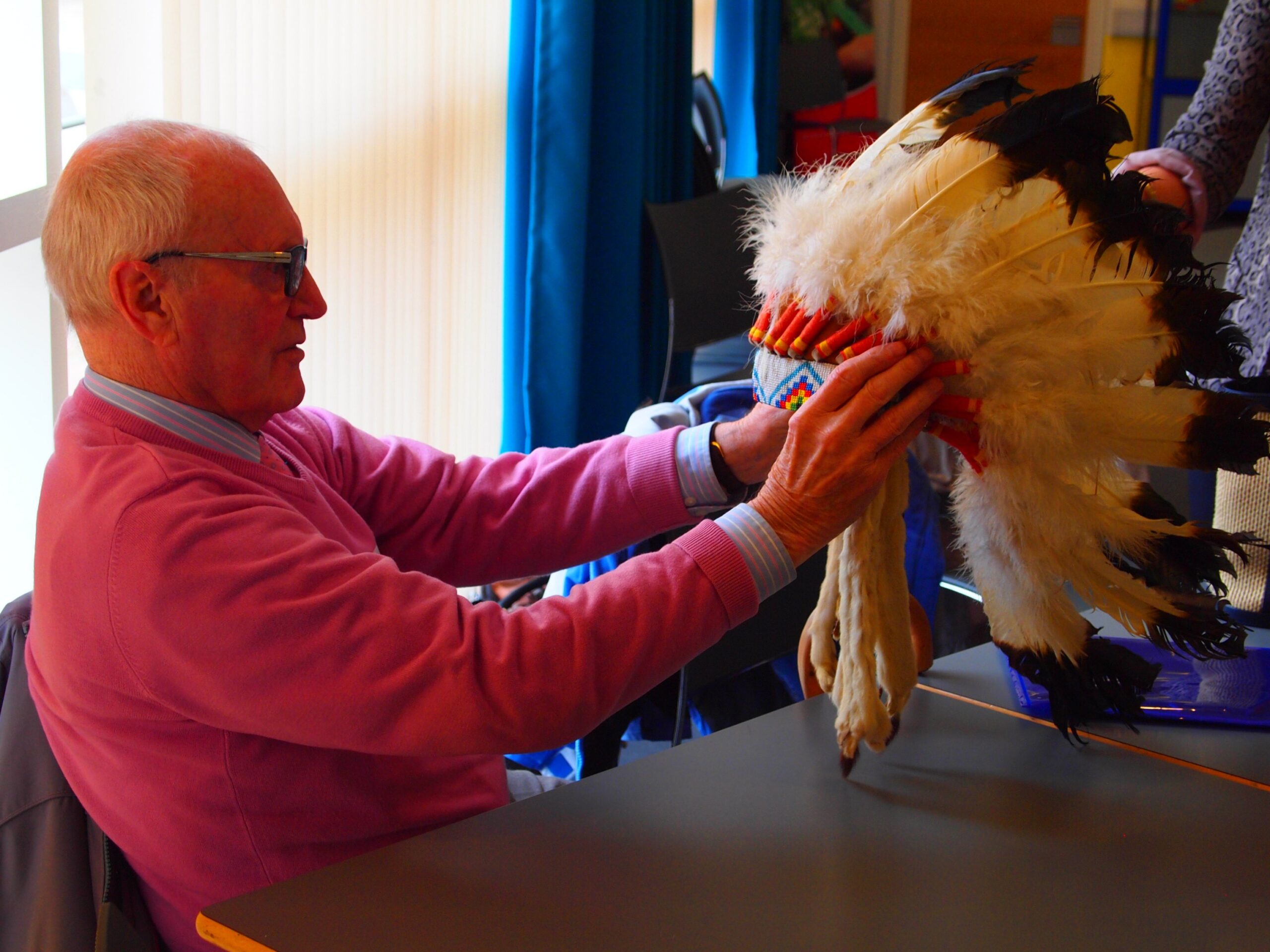
Facing the noisy outside world
West Yorkshire Playhouse’s commitment to dementia-friendly theatre has enhanced Barney Bardsley faith in humanity. She reveals how it came about.
Six years ago Nicky Taylor, Community Development Manager at the West Yorkshire Playhouse (WYP), asked me to help run regular creative workshops in an extensive programme of events for people with dementia.
As a dance/movement practitioner, I have worked for the past 30 years with a huge range of adults, both inside the theatre and outside of it. I am used to coaxing an artistic response from the most reluctant of participants, but the word ‘dementia’ made me pause. What did this mysterious label mean? Would the work be difficult, disturbing even?
We should never underestimate the potential of our theatres to provide the right stimulus, and of people’s ability to blossom in response
My fears were unfounded. The dementia-friendly programme is richly rewarding, the sessions are brimful of life and fun, constantly illuminating and sometimes life-changing. Even if the fundamentals of life, such as speech or movement or cognition are impaired, the eagerness of the people with dementia who come and participate has proved remarkable.
A complex place
There are so many hurdles to be faced, should a diagnosis of dementia be made. Visual-spatial perception may be affected and processing layers of sound is difficult. The whole noisy outside world becomes a complex place to negotiate. And that includes the theatre itself.
Imagine, for example, that the welcome mat at the entrance to your local playhouse or arts centre seems like a bottomless pit. Would you ever cross the threshold? As one woman with dementia put it: “When I see a black mat my brain tells me I’ll fall right to the bottom of the earth.”
And what if the everyday sounds inside that theatre were not benign to your ears, but cacophonous, even painful. Wouldn’t you be tempted just to stay at home, in the quiet?
It doesn’t have to be that way. As a busy, gregarious place, the theatre certainly presents a challenge for people with dementia. But adaptations can be made, and the programme at WYP is designed precisely to mitigate the isolation people with the condition can feel. Not only does it offer theatre-based workshops, but there are also tours, special showings, social gatherings and dedicated dementia-friendly performances on the main stage. Helping people across that scary threshold and back into the beating heart of creative life.
Planning performances
It was winter 2014 when WYP staged a dementia-friendly performance of the musical White Christmas. Since then there have been two more similar events and there is increasing interest from here and around the world. Earlier this year it launched a free Guide to Dementia-Friendly Performances.
All this takes meticulous planning and commitment. For the White Christmas matinee, there was a lengthy consultation with people with dementia. Staff were well-briefed and an army of volunteers was recruited to help people into the building. Adjustments were made to sound and lighting cues, to make the show simpler and less explosive, but without compromising the adult storyline in any way.
Wendy Mitchell, a blogger on living well with dementia, reviewed an adapted production of Chitty Chitty Bang Bang in January this year: “My overwhelming emotion was one of happiness. I hadn’t followed the plot, but it didn’t matter. I enjoyed sharing a wonderful time with the rest of the audience.”
A vital lifeline
Nicky Taylor believes that theatre can provide a vital lifeline to people with dementia and their families, a place of artistry and pleasure, a re-connection with the self and with others, even a healing force.
Her original inspiration for such work came from the close observation of people inside the building. For the past 11 years she has run Heydays, the theatre’s creative arts programme for the over-55s, which has been going for 26 years in total. People have grown old with the project. She said: “Several people came to my attention because they were struggling. One woman started turning up every day, even though Heydays only runs on Wednesdays. Heydays was her motivation for getting up in the morning.”
More nuanced provision was clearly needed. And as Nicky said: “It is simply looking at what we can change, to make things easier.” This requires an open-minded approach and the willingness of everyone within the theatre, from the top down, to undergo training and to make a determined effort at inclusivity.
In 2010, WYP first made contact with the Leeds Peer Support Service for people with dementia, and people started coming to the theatre to take part in creative arts workshops. Nicky said: “We themed that work round the shows and began to notice beautiful connections being made.”
Visits to performances were arranged in small pilot groups. Couples, maybe estranged by the strain of a diagnosis, started holding hands in the audience. Conversations were opened up through singing, movement, art and poetry sessions before and after the shows.
Then in 2014 WYP launched Our Time, a three-year initiative funded by the Paul Hamlyn Foundation, to “embed a dementia-friendly practice throughout the whole theatre,” and to expand the artistic provision off-stage via classes and workshops, as well as on-stage through the dementia-friendly performances.
The right stimulus
We should never underestimate the potential of our theatres to provide the right stimulus, and of people’s ability to blossom in response. This is the true aim surely of any good theatre? Enrichment, connection and communication across the divide.
As for me, I have learned not to be scared of a diagnostic label. The power of people to overcome formidable obstacles – to create new and vital worlds from their own imagination – has enhanced my faith, not just in theatre, but in humanity itself.
Barney Bardsley is a dance and movement practitioner.
E [email protected]
Join the Discussion
You must be logged in to post a comment.